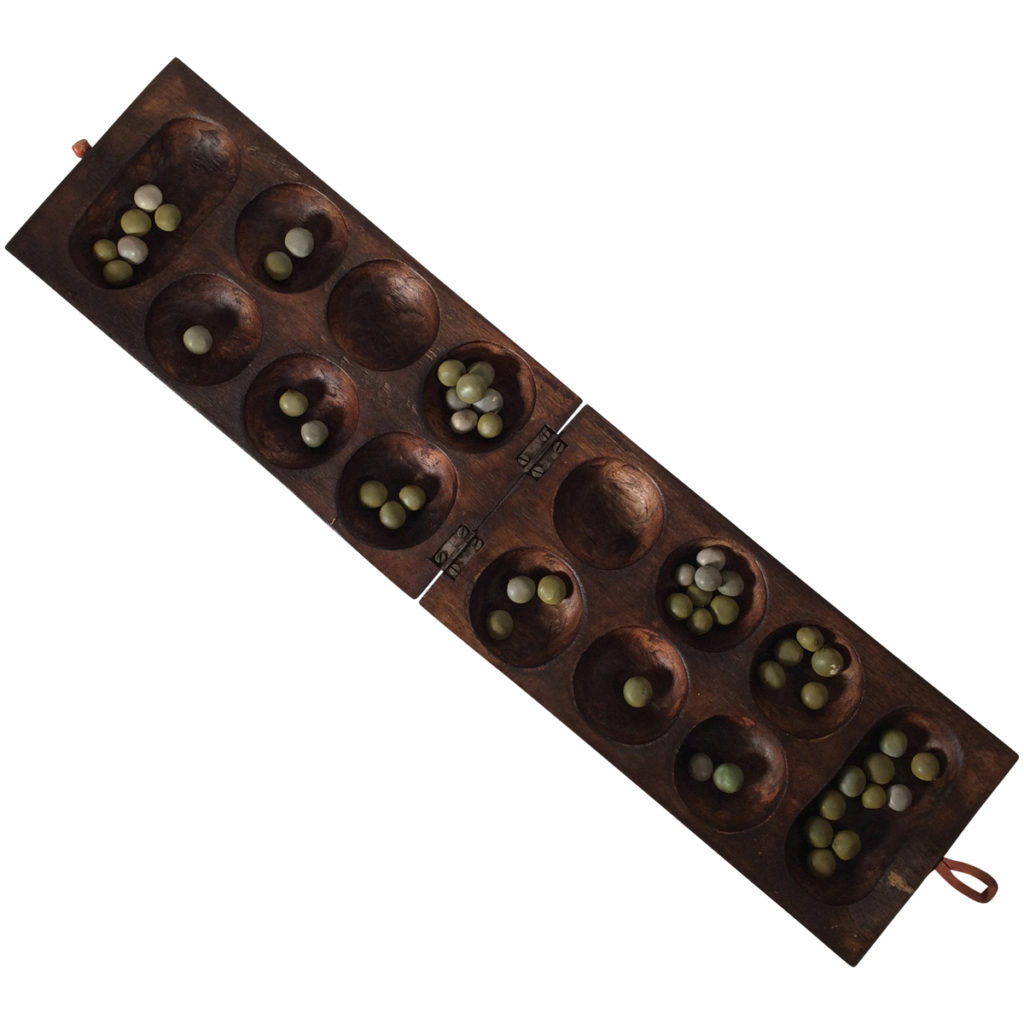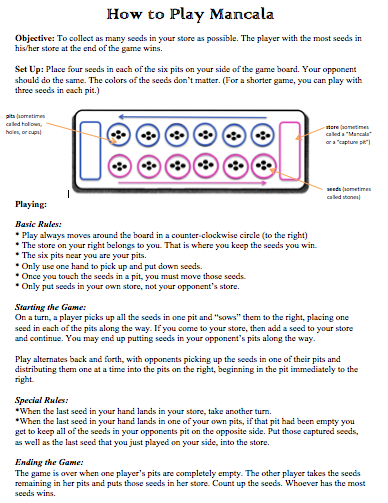

An alternative version to capturing includes removing the seeds in any adjacent holes with two or three pieces rather then the preceding cup. This capture continues until the player reaches a position where there are not two or three stones located in the cup. If the preceding cup has two or three stones, then the pieces are captured as well. The stones are removed from the board and placed in the big storehouse located at either end of the board. In the Wari version, if the last seed sown lands in a cup with exactly one or two of your opponent's pieces in it, then the stones become captured prisoners.
#Mancala rules capture how to
There are several variations on how to capture, including what is done with the counters that are captured. The hole emptied is left empty throughout the rest of the game.Ĭapturing A player may capture a seed from the board on the last lap. In Wari, if a hole contains 12 or more seeds, the sowing will lap around the board more than once. The lap will end when the last seed sown ends when the seed sown ends up next to a empty hole. Instead of scooping up the contents of the last hole, however, the player uses the contents of the next hole to continue with the lap. The Indian style laps, which are called pussa-kanawa, are essentially multiple lap games. The players turn ends when the last seed falls into an empty hole. In a multiple lap game, if the cup in which the last seed is placed contains seeds, then the contents of the cup are picked up and redistributed. Sowing If the turn ends after dropping the last seed into a bin, then the game is considered to be a single lap game. The second player does the same except he goes in an anti-clockwise motion. In some versions of the games, the seeds in which the player can select from is limited to their side of the board. On each turn a player selects one of the bins on their side and takes out all of the pieces (stones) in it, and moving along counterclockwise, drops one piece in each bin they cross. Four counters or seeds are distributed into 1 of the 12 small holes. In Wari, the board has two rows of six holes. The board starts out with a given number of pieces in each of the smaller bins. Players place the board lengthwise between them.

To win: To end with more pieces in your base than your opponent. He drops one stone into the bowl to the right of his bowl and continues up the board counterclockwise placing stones into the right bowl. To move: The first player starts by scooping up his stones from one of his small bowls.


Stones, seeds, shells or any similar object that is easy to handle and distribute into the cups. In some places in Africa holes are made in the ground and seeds or shells are used as counters. One does not need a physical board, however to play the game. In general, the board is made up of smaller bins which are located next to each other along the length of the board (each of the two rows belongs to one of the players) and at each end of the board there is a larger bin which represents the base or store for each opponent. The Boardĭepending on the variation, the board can have different amount of holes. Although there are at least two hundred different regional variations, West African Wari is perhaps the best known. Much of the original rules have remained unchanged and even today Mancala is popular across most of Africa, the Middle East and Asia. It has long been played in Africa for thousands of years. Historians believe Mancala may be the oldest game in the world. The counters which are also known as seeds are redistributed with the goal of taking prisoners. The Mancala family of games share the basic gameplay of sowing counters into holes or cups. Mancala does not refer to any specific game, but instead is the name for a large family of board games played around the world.


 0 kommentar(er)
0 kommentar(er)
